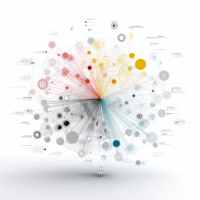AI Lab itinai.com
-
Researchers at NTU Singapore Propose a Novel and Efficient Diffusion Model for Image Restoration IR that Significantly Reduces the Required Number of Diffusion Steps
Researchers at NTU Singapore have developed a new diffusion model, ResShift, which accelerates image restoration by cleverly leveraging the degraded image as a basis for restoring the original, high-quality version. The model efficiently balances performance and speed, setting a new benchmark in the image restoration domain, with potential real-time applications in cameras and photo editing […] ➡️➡️➡️
-
MIT Researchers Developed an Image Dataset that Allows Them to Simulate Peripheral Vision in Machine Learning Models
MIT researchers developed the Texture Tiling Model (TTM) to address accurately modeling human visual perception in deep neural networks, particularly focusing on peripheral vision. The proposed method, Uniform Texture Tiling Model (uniformTTM), and COCO-Periph dataset aim to bridge the performance gap between humans and DNNs. Further advancements are needed to optimize DNNs for generalization and […] ➡️➡️➡️
-
Meet VisionGPT-3D: Merging Leading Vision Models for 3D Reconstruction from 2D Images
VisionGPT-3D, a unified framework by researchers from top universities, leverages cutting-edge vision models and algorithms to automate the selection of state-of-the-art vision processing methods. It focuses on tasks like reconstructing 3D images from 2D representations and addresses limitations in non-GPU environments. The framework aims to optimize efficiency and prediction precision while reducing training costs. [50 […] ➡️➡️➡️
-
SuperAGI Proposes Veagle: Pioneering the Future of Multimodal Artificial Intelligence with Enhanced Vision-Language Integration
The development of Veagle by SuperAGI represents a significant advancement in multimodal AI, revolutionizing the integration of language and vision. Veagle’s innovative approach addresses the limitations of existing models and achieves superior performance, setting new standards in visual question answering and image comprehension tasks. This signals a paradigm shift in multimodal representation learning, with potential […] ➡️➡️➡️
-
Microsoft Introduces AutoDev: A Fully Automated Artificial Intelligence-Driven Software Development Framework
Microsoft has introduced AutoDev, a groundbreaking AI-driven software development framework that goes beyond traditional AI integrations to autonomously handle complex engineering tasks. By leveraging AI agents and Docker containers, AutoDev enhances efficiency and security while demonstrating exceptional performance in automating software engineering tasks. This revolutionary approach signifies a significant advancement in intelligent and secure software […] ➡️➡️➡️
-
Anthropic and Google Cloud Partner to Bring Advanced Claude 3 AI Models to Vertex AI
Anthropic achieves a major milestone in AI with the release of Claude 3 Haiku and Claude 3 Sonnet on Google Cloud’s Vertex AI platform, and the upcoming launch of Claude 3 Opus. Emphasizing data privacy and security, this collaboration aims to make advanced AI more accessible, with Quora’s successful integration highlighting the practical benefits. ➡️➡️➡️
-
From Science Fiction to Reality: NVIDIA’s Project GR00T Redefines Human-Robot Interaction
NVIDIA’s Project GR00T revolutionizes AI in robotics, enhancing robots’ interaction with the world. Supported by the Jetson Thor platform and Blackwell GPU, it focuses on natural language processing and human movement emulation. NVIDIA’s partnerships and commitment to the Open Source Robotics Alliance illustrate a trend towards open-source collaboration, signaling a pivotal moment in AI and […] ➡️➡️➡️
-
VideoMamba: A Purely SSM-based AI Model for Efficient Video Understanding
VideoMamba is an innovative model for efficient video understanding, utilizing State Space Models for dynamic context modeling in high-resolution, long-duration videos. It leverages 3D convolution and attention mechanisms within a State Space Model framework to outperform traditional methods, demonstrating exceptional performance across various benchmarks and excelling in multi-modal contexts. ➡️➡️➡️
-
Survey of Knowledge Conflicts in Large Language Models: Pathways to Enhanced Accuracy and Reliability
Large language models (LLMs) play a crucial role in AI, utilizing vast knowledge to power various applications. However, they face challenges with conflicting real-time data. Researchers are actively working on strategies like dynamic updates and improved resolution techniques to address this issue. These efforts aim to enhance LLMs’ reliability and adaptability in handling evolving information. ➡️➡️➡️
-
NVIDIA’s Blackwell GPU Revolution: Unleashing the Next Wave of AI and High-Performance Computing
NVIDIA launches its Blackwell platform, featuring GPUs B100 and upcoming B200, set to revolutionize AI and HPC. Partner Dell highlights their pivotal role in AI data centers. Leveraging TSMC’s 3nm process, the GPUs promise to double AI performance, but pose power efficiency challenges. This groundbreaking platform signifies a shift towards more capable, efficient computing resources. ➡️➡️➡️
-
Google DeepMind’s new AI assistant helps elite soccer coaches get even better
Top soccer teams seek an advantage through extensive data analysis. Google DeepMind’s AI assistant, TacticAI, offers advanced recommendations for soccer set-pieces by analyzing corner kick scenarios. It reduces coaches’ workload and its strategies outperformed real tactics in 90% of cases. The AI’s potential extends to various team-based sports. (Words: 50) ➡️➡️➡️
-
TacticAI: an AI assistant for football tactics
Liverpool FC and our organization have collaborated for multiple years. We have developed a comprehensive AI system to offer advice to coaches regarding corner kicks. ➡️➡️➡️
-
BurstAttention: A Groundbreaking Machine Learning Framework that Transforms Efficiency in Large Language Models with Advanced Distributed Attention Mechanism for Extremely Long Sequences
Large language models have transformed language understanding and generation in machine learning. BurstAttention, a novel framework, addresses the challenge of processing long sequences by optimizing attention mechanisms, significantly reducing communication overhead and improving processing efficiency. It outperforms existing solutions, maintaining model performance while offering scalability and efficiency, marking a significant advancement in NLP. ➡️➡️➡️
-
The AI Act is done. Here’s what will (and won’t) change
The EU’s AI Act was approved by the European Parliament, marking a significant step in regulating AI. The Act will ban certain AI uses, require labeling of AI-generated content, establish a new European AI Office, and enforce transparency from AI companies. The Act aims to address potential harms and ensure ethical use of AI. ➡️➡️➡️
-
Researchers from IBM and MIT Introduce LAB: A Novel AI Method Designed to Overcome the Scalability Challenges in the Instruction-Tuning Phase of Large Language Model (LLM) Training
IBM researchers have introduced LAB (Large-scale Alignment for chatbots) to address scalability challenges in instruction-tuning for large language models (LLMs). LAB leverages a taxonomy-guided synthetic data generation process and a multi-phase training framework to enhance LLM capabilities for specific tasks, offering a cost-effective and scalable solution while achieving state-of-the-art performance in chatbot capability and knowledge […] ➡️➡️➡️
-
Meet Greptile: An AI Startup that Lets LLMs Understand Large Codebases
Greptile, an innovative AI startup, addresses the challenges of complex codebases. It offers a unique approach: engineers can ask plain English questions to receive clear, detailed responses about code, saving time and aiding comprehension. Additionally, Greptile prioritizes data security, with a self-hosted option. Backed by YCombinator, has gained traction, impacting the development industry. ➡️➡️➡️
-
Researchers at Google AI Present a Machine Learning-based Approach to Teach Powerful LLMs How to Better Reason with Graph Information
Google researchers are developing LLMs to better reason with graph information, which is pervasive and essential for advancing LLM technology. They introduced GraphQA, a benchmark for graph-to-text translation, to assess LLM performance on graph tasks and found that larger LLMs often perform better. The research provides valuable insights for preparing graphics for LLMs. ➡️➡️➡️
-
Enhancing Language Models’ Reasoning Through Quiet-STaR: A Revolutionary Artificial Intelligence Approach to Self-Taught Rational Thinking
Researchers are striving to improve language models’ (LMs) reasoning abilities to mirror human thought processes. Stanford University and Notbad AI Inc introduce Quiet Self-Taught Reasoner (Quiet-STaR), an innovative approach embedding reasoning capacity into LMs. Unlike previous methods, Quiet-STaR teaches models to generate internal rational thoughts, optimizing their understanding and response generation. This advancement promises language […] ➡️➡️➡️
-
This AI Paper Introduces the Lightweight Mamba UNet (LightM-UNet) that Integrates Mamba and UNet in a Lightweight Framework for Medical Image Segmentation
The Lightweight Mamba UNet (LightM-UNet) integrates Mamba into UNet, addressing global semantic information limitations with a lightweight architecture. With a mere 1M parameters, it outperforms other methods on 2D and 3D segmentation tasks, providing over 99% parameter reduction compared to Transformer-based architectures. This paves the way for practical deployment in resource-constrained healthcare settings. ➡️➡️➡️
-
Google AI Introduces Cappy: A Small Pre-Trained Scorer Machine Learning Model that Enhances and Surpasses the Performance of Large Multi-Task Language Models
Google researchers introduced Cappy, a pre-trained scorer model, to enhance and surpass the performance of large multi-task language models, aiming to resolve challenges faced by them. Cappy, based on RoBERTa, works independently or as an auxiliary component, enabling efficient adaptation of LLMs without requiring extensive finetuning. It addresses the need for label diversity in pretraining […] ➡️➡️➡️

















